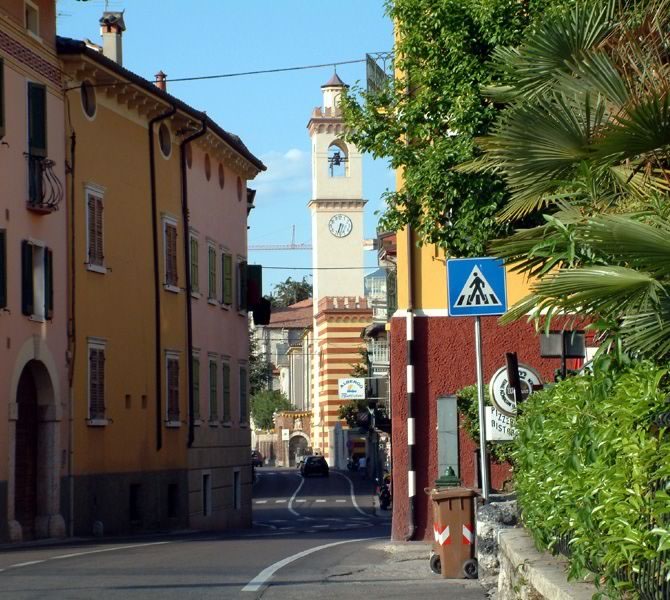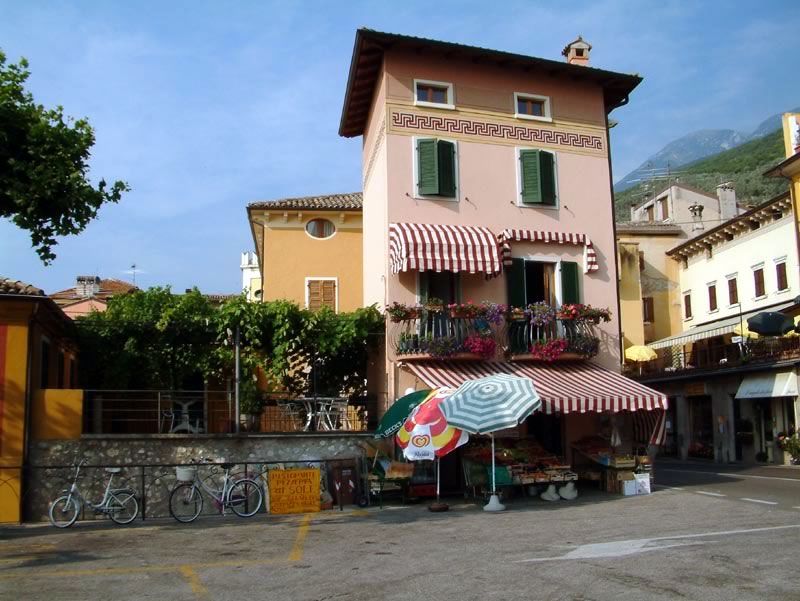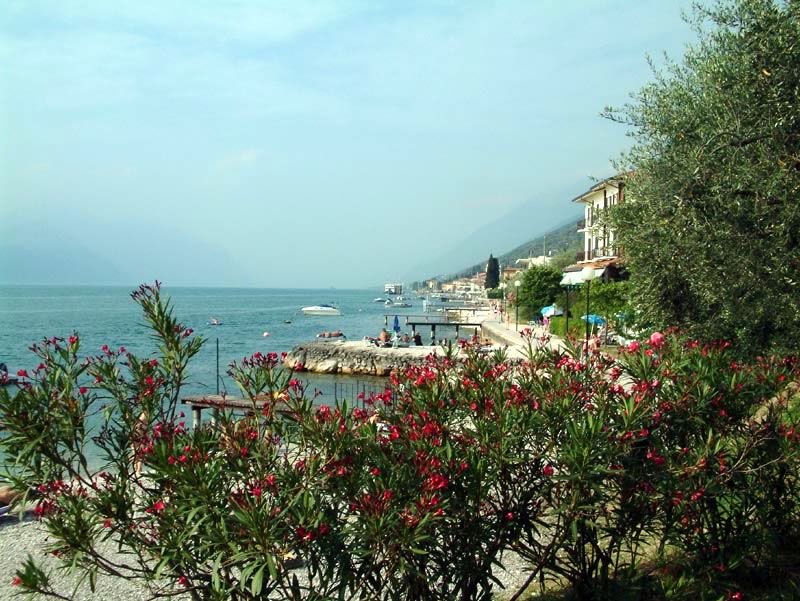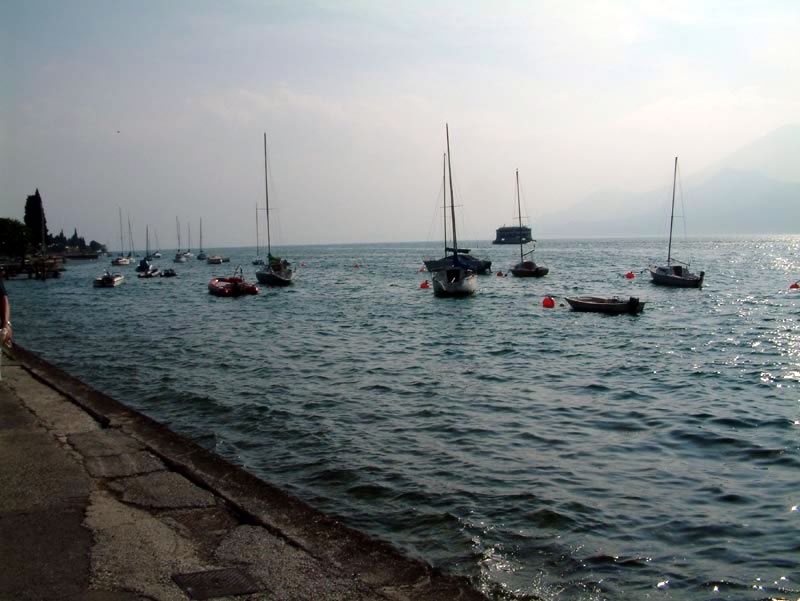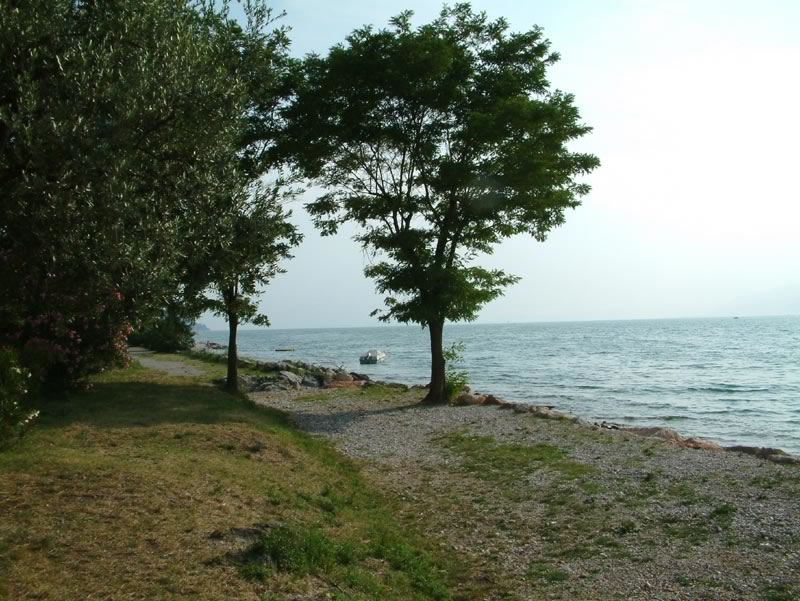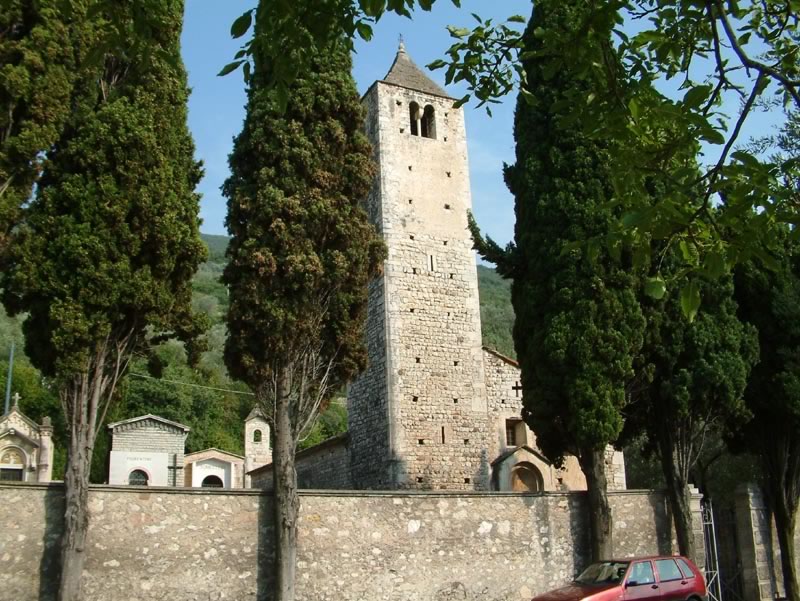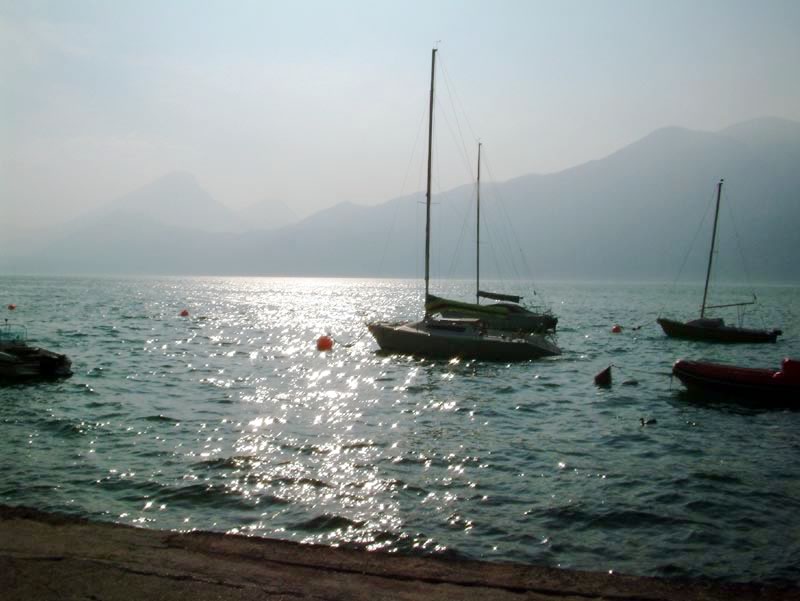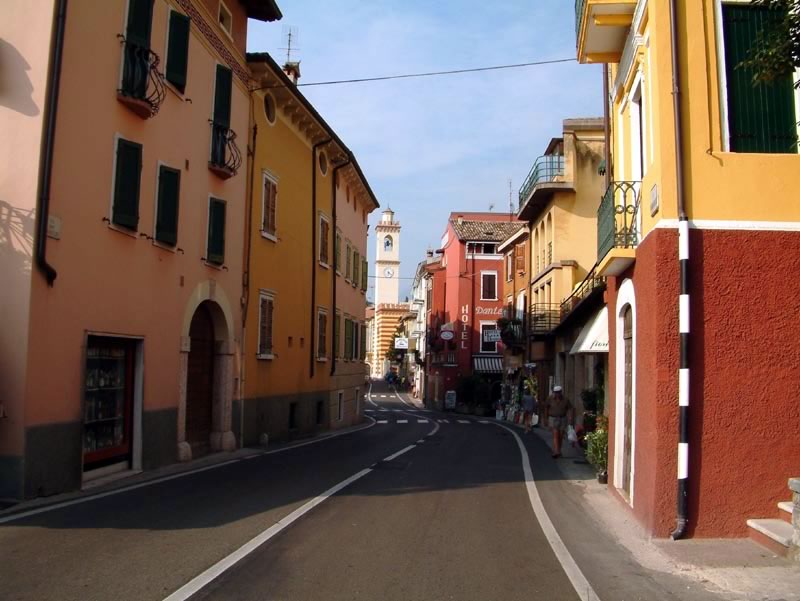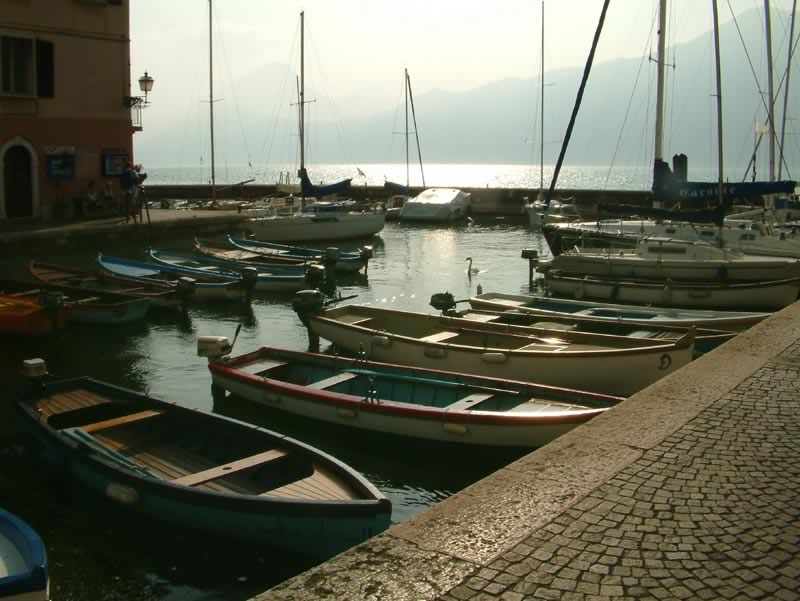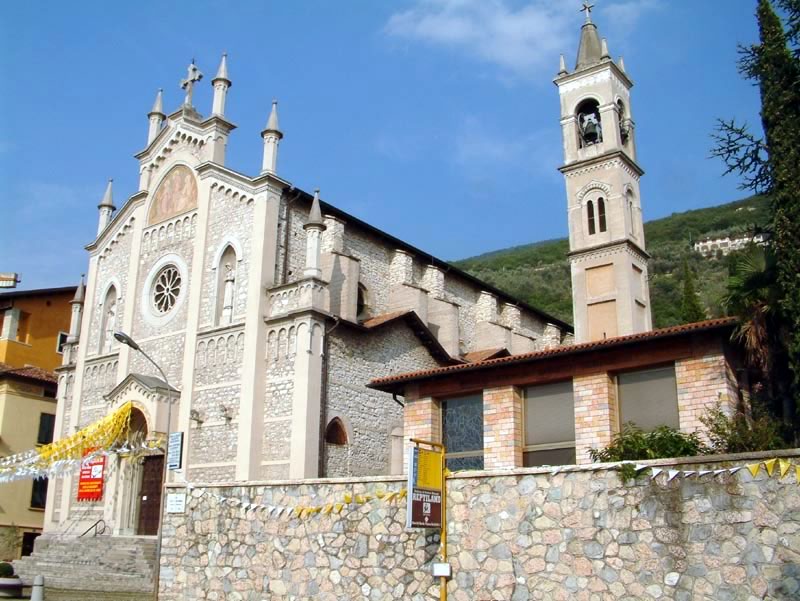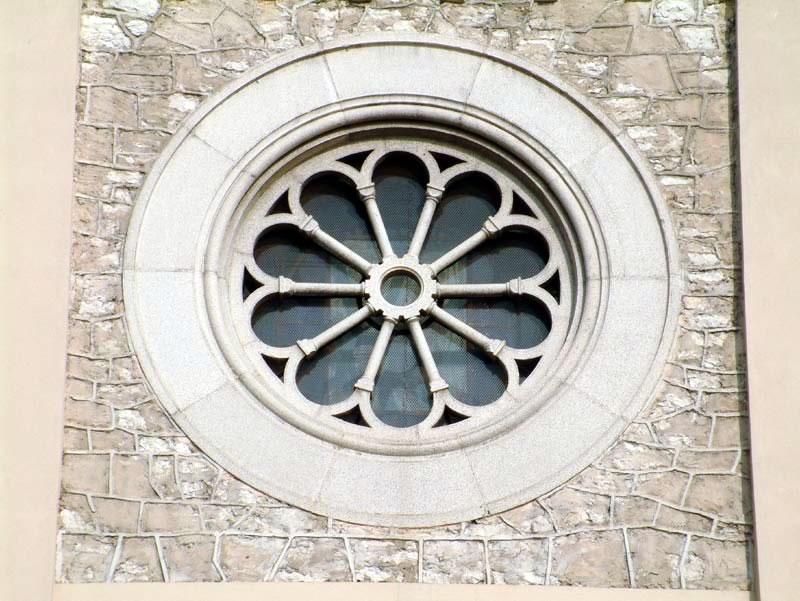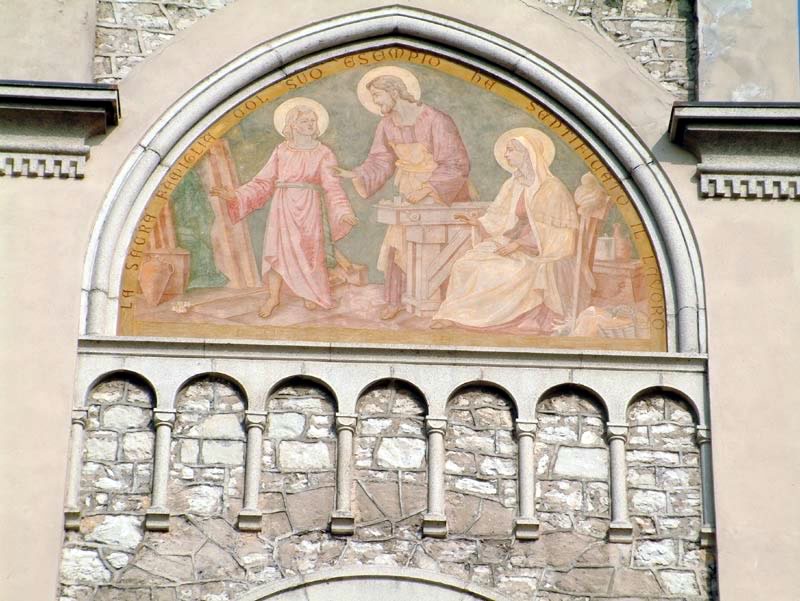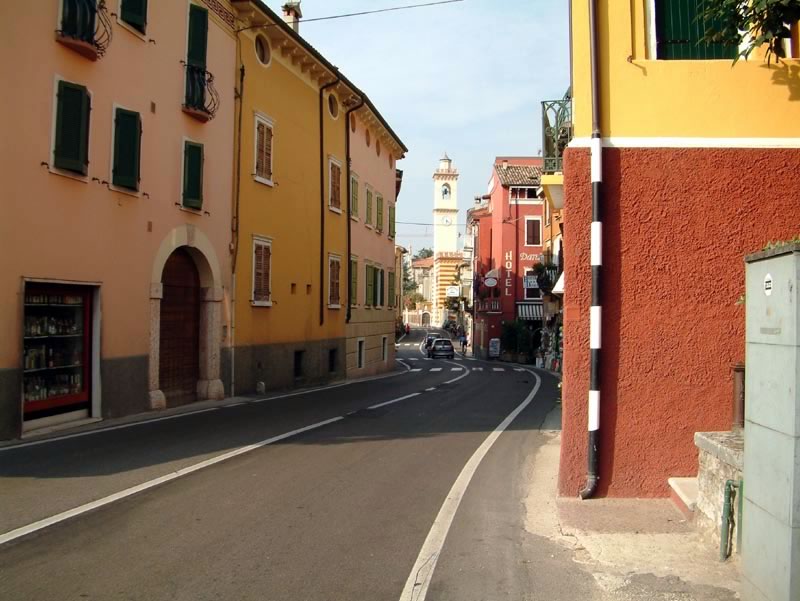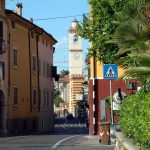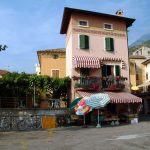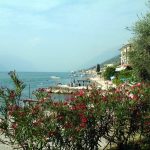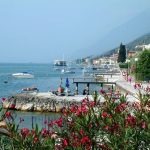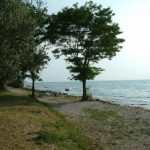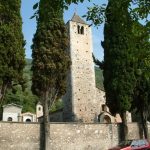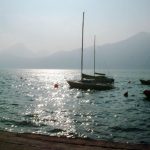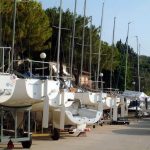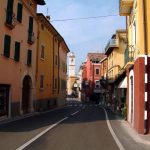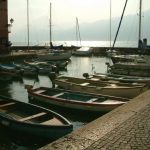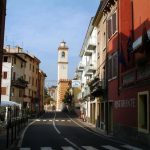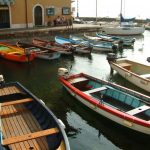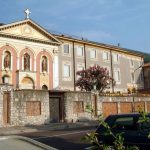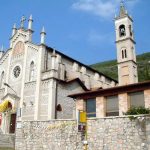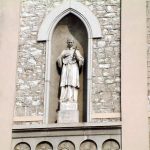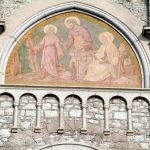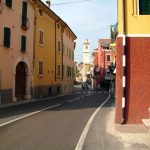Brenzone
HISTORY OF BRENZONE
They tell that the name Brenzone derives from the surname “Brenzoni“, a rich family, once living here, cultivating a lot of agricultural fields. Others mean, that the name derives from the French nobleman “Bruncione“, who came here once a time, for meeting the sovereign Re Pipino, a son of “Karl dem Grossen” (Carlo Magnum, German sovereign).
ARTS
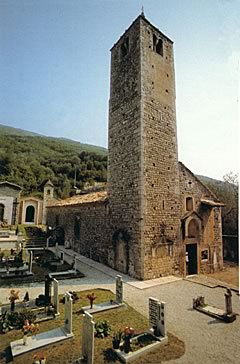 Only a few kilometres away from Castelletto di Brenzone, on the cemetery, stands one of the most interesting churches of Lake Garda. It is consecrated to San Zeno and the people here called it “de l’oselet (the church with the bird)”, because its bell-tower has metal-cock on the top. The temple was built in the 12th. century on ruins of a Romanesque church. It has a asymmetrical facade and out of the middle of the side nave rises its famous square steeple. Inside, unusual for the region of Lake Garda, we can find two unequal naves with always two apses and a third pseudo apse, put up at the south-side, outside of the complex. Very interesting the wonderful frescoes of the 13th. century.
Only a few kilometres away from Castelletto di Brenzone, on the cemetery, stands one of the most interesting churches of Lake Garda. It is consecrated to San Zeno and the people here called it “de l’oselet (the church with the bird)”, because its bell-tower has metal-cock on the top. The temple was built in the 12th. century on ruins of a Romanesque church. It has a asymmetrical facade and out of the middle of the side nave rises its famous square steeple. Inside, unusual for the region of Lake Garda, we can find two unequal naves with always two apses and a third pseudo apse, put up at the south-side, outside of the complex. Very interesting the wonderful frescoes of the 13th. century.
At the wall, put on, there are2 crutches a thankful remembrance of a recovery. At the surface, protected by a little roof, there is put on a statue of Jesus Christ (13th.century). On the right side you can admire an enormous sculpture of San Cristoforo (Usually the church is opened from sunrise to sunset). The real parish church of Castelletto di Brenzone was builtin the year 1.900, in order of Monsignore Nascimbeni (1851 – 1920), who founded here the convent of the Nuns of the holy family (Le piccole suore della sacra famiglia).
The ancient Parish of the 15th. century was pulled down in 1920 for constructing the main road “Via Gardesana”, preserved is only the ancient bell tower. From the town you can climb up to the hills, till you arrive at a little square “Piazzetta dell’Olivo” of the hamlet “Contrada Biasi” (altitude 160m), with a Medieval tower just in the midst. They tell, that in that tower, once a time, there lived a terrible magician, named Davi. Quite nearby, immersed in an olive yard, you can find the church San Antonio, a rural building with a big fresco of the 13th. century on one of its facades. It is San Cristoforo, the saint patron of the hikers. We are on an ancient lane, where every year in the evening of Good Friday they celebrate the “Via Crucis”, the persons wear typical dresses and they play the whole event of Good Friday, always with a great audience, each one equipped with a little candle or a light, illuminating the tragic historical scenery.
At the coast, about 3 km away from Castelletto di Brenzone, lies the hamlet Magugnano, it is the main town of the Commune of Brenzone. In the town hall you can admire “Pietra di Castelletto” a tomb stone of the Bronze Ages with engravings of many ashes (2.000 B.C.). The parish church, consecrated to Giovanni Battisita, was completely restored in the 18th. century. The bell tower, in Romanesque stile, dates back to the 14th. century. The church has an enormous marble entrance portal, edified in the 15th. century. Inside it keeps a precious piece by Giovanni Caliari (18th. century), a crucifix of the 16th. century and at least a wonderful pipe organ, recently restored.
ATTRACTIONS
Not far from Mugagnano, there is another little hamlet, called Porto di Brenzone, where on every third Sunday of August they celebrate a popular festival with numerous aquatic games and sands where you can taste fish-specialities. Going along the coast, in direction to Malcesine, we reach the district Assenza, a little town, once ruled by the “Serenissima” (Republic of Venice). Its name derives from the Latin language “la sensa = L’ascensione = the ascent”.
In front of Assenza, there is the little island “Trimelone“, only 22om long. During the 10th. century it was dominated by a fortress, completely destroyed in 1158 by King Barbarossa. Then, in 1916, the island was used like ammunition-magazine, and in 1950 sfortunately it was destroyed once again by a big explosion. On the little square of Assenza stands the church San Nicola, completely restored in the 14th/15th. century. Inside it keeps an wonderful fresco of the 12th. century, “the Communion” and more. Also very interesting a beautiful painting of the 15th. century above the high altar. In the background, there is another beautiful district, called Castello (altitude 140m), with a wonderful parish church of the 18th. century. On every 11th. of July a long procession of believers starts on church square, guided by the priest, carrying a wood statue, “Madonna Assunta”, better known as “Madonna della Cholera“.
In 1836 an epidemic of cholera pulsated in that territory, the procession will remember that terrible event, thanking Our Lady for her help. From Castello with its typical and original clusters you can have wonderful panoramas of Lake Garda. Let us tell about other districts: Venzo, Borago, Pozzo e Sommavilla and their antique originality: clusters with innumerable little chapels, harmoniously integrated in the hilly landscape. There is one isolated hamlet, named Campo, an former fortress, enlarged by groups of rural houses and stalls, with inhabitants, who lived exclusively like farmers and olive cultivators. Inside there is a little church, consecrated to San Pietro in Vincoli, with precious frescoes of the 13th. century.In Cassone, a little village in direction to Malcesine, you can walk up to the hermitage “Ss. Benigno e Caro”. It has an altitude of 830m and wonderful panoramas. Going on, you arrive at the “botanical garden” of Monte Baldo, with more than 6oo different kinds of flowers immersed in large green meadows.
